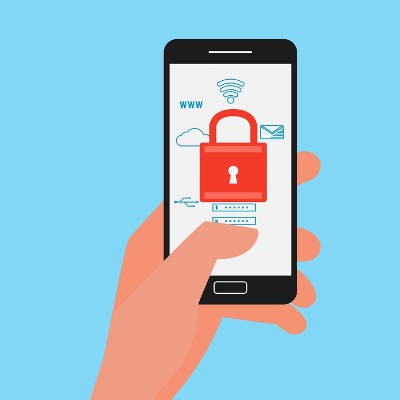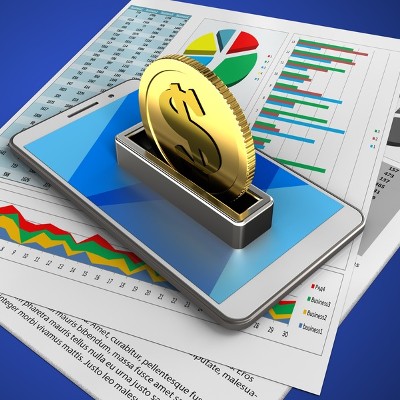In today’s business, the demand for software often outpaces the supply of available coders. For businesses that find the need for new applications to drive their business initiatives, there are now “no code” tools available that can help them create the software they need without having to lean on software developers. This week, we take a look at no code tools and how they can work for your business.
The Connection, Inc Blog
When considering solutions to help ensure your business’ IT security, mobile devices often go overlooked. This makes sense--for most of the time the telephone has existed, it has been attached to a wall, only capable of transmitting sound. However, with phones now being palm-sized computers that we carry in our pockets, keeping them safe from cyberthreats has a new importance.
Wouldn’t it be convenient if your business could have web pages or applications read out text for you so that you don’t have to? While most would consider this a luxury, these screen reading applications are an everyday occurrence to those who are blind, visually impaired, or have a learning disability. Even if you don’t have anyone in your office who needs screen reading, it can’t hurt to be prepared for a day when you might.
Google has contributed many useful applications and utilities to the average computer user, but one of the biggest standalone contributions that Alphabet, Inc. has made is Gmail, its email program. While this communications tool is comprehensive on its own, it only becomes more useful when paired with the right extensions. Today, we’ll review some of the ones that can best help you boost and sustain high levels of productivity.
All businesses require at least some type of software in order to perform as expected. It’s how organizations acquire this software that has a considerable impact on cost. For some, software can be a budget-breaking nightmare, but others have found a much more convenient way of acquiring this software: as a service.
Software as a Service is a method of software distribution designed to help your business acquire the applications it needs without suffering from the large upfront costs that software acquisition typically carries with it. Do you remember purchasing software licenses for each and every user on your network? This can get somewhat challenging to maintain, as these licenses need to be renewed frequently, and if they are not, your organization could be put at substantial risk.
Businesses can instead use software as a service offerings to purchase access to cloud-based applications and storage. Basically, you pay for access to the software and reap all of the benefits of actually owning it--plus some additional ones--by leveraging cloud computing.
More Cost-Effective
Think about how much it costs to purchase software for your organization. The same services that are necessary for operations, could be a major detriment to turning a profit. With the use of an application hosted in the cloud, you can cut the cost of ownership and transfer the once recurring capital expense into a manageable operating expense.
Up-to-Date Editions
When you purchase software as a service applications, you always access the most recent version of it through an online interface. This means that you’ll never have to worry about updating the apps with patches or security updates, as they will be taken care of by the service provider.
More Flexibility
Purchasing new software licenses can be troublesome, especially when you’re a small business that’s experiencing growing pains. You can add new users easily enough just by creating accounts for them--no additional purchases necessary. Changes in your service plan are generally added on your next billing cycle. This provides the scalability every growing business needs.
Does your business want to use software as a service? The Connection, Inc can help. To learn more, reach out to us at (732) 291-5938.
Digital payment options have become commonplace in today’s society. In fact, ever since people could purchase goods and services off of the Internet, some of the world’s most successful companies are a result of digital payment. It was a natural progression then, as the mobile device boom came, that mobile payment would take the place of cash and/or cards and bring these digital payment options beyond the Internet, and into our retail stores. This simply hasn’t happened and here are four reasons why.
The Tried and True Payment Still Works
The first reason is simple. Retailers still accept cash and credit cards. Why would anyone who has been using these tried and true methods of payment for 20-plus years change things up? According to First Annapolis Consulting’s “Study of Mobile Banking & Payments”, while 64 percent of all smartphone users have used some form of mobile payment platform, only five percent consider themselves frequent payment users. The fact is that it’s not as attractive as you may think, and is further relegated to the background because...
There is a Lack of Incentive
What added value does a mobile payment service actually offer? Sure, in some states that have gone to a digital ID system, this would seemingly allow consumers to forgo the wallet completely. That’s it. Most mobile payment interfaces make it difficult for users to redeem loyalty points or take advantage of special offers at mobile point of sale machines.
There are companies, such as Starbucks, that have made a point to integrate their loyalty points system into their mobile payment platform. Their mobile app combines the loyalty point program with mobile payment options, which is great for consumers. But like the consumers themselves, if a company doesn’t see an immediate (or even long-term) demand, they will avoid laying out the capital until that demand is present.
In order for mobile users to take full advantage of the mobile payment platforms, you will need to give them some form of incentive to use it. This is mainly since...
Mobile Payment Actually Takes More Effort
One of the claims that mobile payment providers make is that it is much easier to use than any other type of payment. Just tap and go. While this seems reasonable on the surface, the reality of it is that it takes just as long or longer to access your mobile payment platform through your smartphone as it does to take cash or a card out of a wallet. Consider for a minute the steps you have to take in order to make mobile payment work: You have to take your phone out, unlock it, access the mobile wallet app, select which card you want to use, and then hold your phone to the terminal. After this they still need to either sign the screen/paper or provide a pin. Why take so much effort to make purchases when it takes less time to buy goods in a traditional way; and, still have to deal with…
Mobile Payment Security Concerns
To be fair, mobile payments may be as secure as any other form of digital payment, but there is an inherent fear in many consumers’ minds that because there is an all-digital transmission of financial information that it is somehow less secure than traditional digital payment options. This fear isn’t unfounded, as each day people can read about data breaches at banks, stores, and major online retailers, that only work to fuel the anxiety surrounding mobile payments.
Many cyber security experts have cautiously endorsed the use of secure payment apps, while others point to studies like the 2015 Mobile Payment Security Study that overwhelmingly urges a wait-and-see approach, but does admit that the industry is making headway in the security of mobile financial transactions with the inclusion of account tokenization, device-specific cryptograms, and multi-factor authentication.
In the future, mobile devices will become the only computer we’ll need, but will they become the only wallet we’ll need? Only time will tell.






